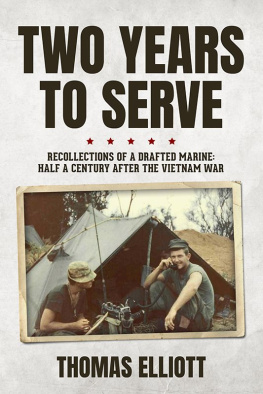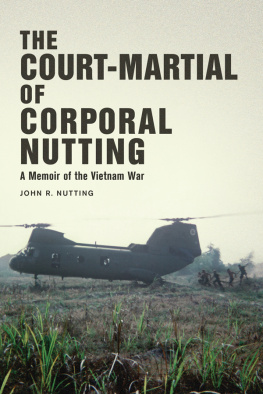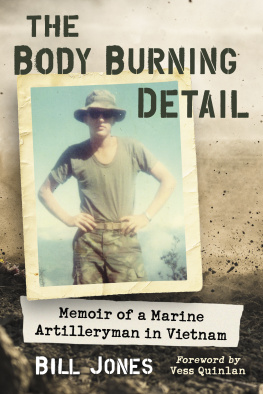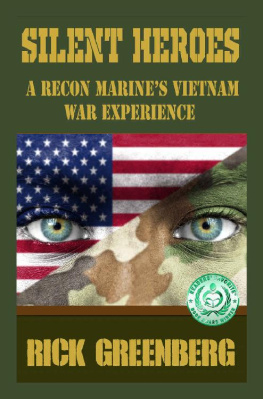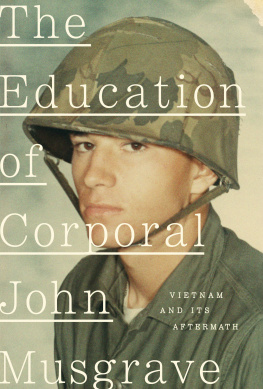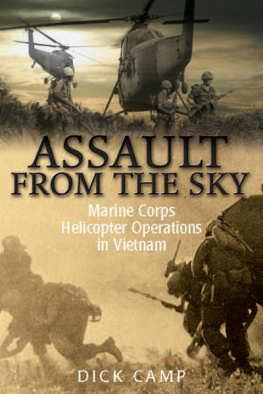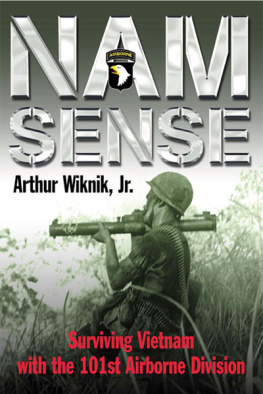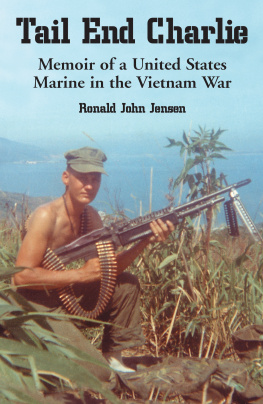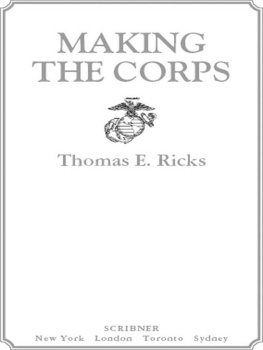Table of Contents

Charleston, SC
www.PalmettoPublishing.com
Two Years to Serve
Copyright 2022 by Thomas Elliott
All rights reserved
No portion of this book may be reproduced, stored in a retrieval system, or transmitted
in any form by any meanselectronic, mechanical, photocopy, recording, or other
except for brief quotations in printed reviews, without prior permission of the author.
Hardcover ISBN: 979-8-88590-940-2
Paperback ISBN: 979-8-88590-941-9
eBook ISBN: 979-8-88590-942-6
All gave some, some gave all!
Howard William Osterkamp
DEDICATED TO AND IN THE MEMORY OF MY FALLEN BROTHERS:
Paul O. Evans: KIA December 22, 1966
Gary G. Schneider: KIA December 31, 1966
Ferrell Hummingbird: KIA January 14, 1967
Patrick S. Cochran: KIA August 21, 1967
Raymond G. Potter: KIA September 10, 1967
Anthony P. Sawicki: KIA September 10, 1967
Ronald L. Black: KIA September 11, 1967
Terrance E. Klaric: KIA May 11, 1967
Some people live an entire lifetime and wonder if
theyve ever made a difference in the world.
Marines dont have that problem.
Ronald Reagan, former President of the United States
Table of Contents
3/26: 3rd Battalion, 26th Marine Regiment
A.S.A.P: As Soon As Possible
AO: Area of Operation
AWOL: Absent Without Official Leave
BS: Bullshit
C-4: Explosive material
CAC: Combined Action Company
CAP: Combined Action Platoon
CAP: Combined Action Program
CP: Command Post
C-Rations: Combat ready meals
C-Rats: Short for C-Rations
DI: Drill Instructor
DMZ: Demilitarized Zone
EOD: Explosive Ordnance Disposal
Filthy Few: Nickname for Second Platoon
H and S: Headquarters and Service Company
Hooch: Tent or other type of protection/living quarters
HQ: Headquarters
I Corps: Tactical Area South of the DMZ
ITR: Infantry Training Regiment
Klicks: Kilometer
Lt.: Lieutenant
LZ: Landing Zone
M-79: Grenade launcher
MCRD: Marine Corps Recruit Depot
mm: millimeter
MOS: Military Occupation Specialty Code
MP: Military Police
NCO: Non-Commissioned Officer
NVA: North Vietnam Army
OCS: Officer Candidate School
PA: Public Address
PF: Popular Forces
PI: Philippines
PM: Provost Marshal
PRC-25: Portable field communications radio
PT: Physical Training
PTSD: Post Traumatic Stress Disorder
Punji Pit: Sharp bamboo stake booby trap
PX: Post Exchange
R&R: Rest and Recuperation
RVN: Republic of Vietnam
S/Sgt.: Staff Sergeant
Sgt.: Sergeant
Turk: Lt. Dolan Second Platoon Commander
USMC: Unites States Marine Corps
USO: United Service Organizations
VC: Viet Cong
WWII: World War Two
XO: Executive Officer
I n January 1966, I was twenty years old, had a job as a draftsman, and attended city college part-time when I was drafted into the United States Marine Corps. My life changed forever. An avid surfer, my transformation from blond-haired, tan-skinned, barefoot, Southern Californiabeach boy to a U.S. Marine required serious reprogramming. I attended boot camp at the Marine Corps Recruit Depot (MCRD) in San Diego, California. There I learned the true meaning of the phrase, No pain, no gain.
After boot camp, I received extensive combat infantry training at Camp Pendleton. In May of 1966, the Marine Corps reactivated the former, highly decorated WWII 3rd Battalion, 26th (3/26) Marines to fight in Vietnam. Assigned to Second Platoon Lima Company, I spent a full tour of thirteen months overseas, and ten and a half months in Vietnam. I made and lost close friends and we endured many hardships that tested our resolve. Throughout my time in the Marines, I wrote letters to my family and my girlfriend. Fifteen years after my return from Vietnam, my mother gave me a shoebox containing the letters. She said nothing about them, other than I may want to read them someday. I was not sure if I wanted to relive that time; years passed before I read them.
Thirty-five years after the war ended, I received a phone call from our platoon Navy Corpsman, Bill Miller. We called him Doc. His call to the original members of the Second Platoon was to encourage them to attend the biannual reunion of the 3rd Battalion 26th Marines in Ennis, Montana, in August of 2002. After my talk with Doc, I found the shoebox of letters stored in an old trunk in my garage and began to read them. Correct in my fear of reliving the events, the letters brought back memoriessome good, some bad. While I read the letters, I marked the ones with noteworthy events and then decided I would attend the reunion.
Two hundred and fifty members of the battalion attended, including twenty surviving members of the original Lima Company, Second Platoon. A three day event, we spent the evenings drinking beer and telling tall tales of our experiences in Vietnam, some slightly exaggerated over time and the number of beers consumed. My letters helped confirm or amend those experiences.
Our platoon commander, Lieutenant Harry Dolan, who spent twenty-six years in the Marine Corps and retired as a major, also attended the reunion. I was his radio operator in Vietnam. The last night of the reunion, the lieutenant suggested I use the information in my letters to write a journal of the platoons actions during our tour in Vietnam. I agreed to write the journal, but said I needed help. I received copies of letters the other guys had written home, their story ideas, recollections of events, and pictures. I obtained copies of the declassified daily action reports for the first three months the 3/26 fought in Vietnam. With my letters, the information received from the guys, and notes taken at the reunions, including our own platoons reunion in 2003, I wrote the journal. Completed in 2005, I printed fifty copies and sent a copy to each of the surviving members of the original Second Platoon and to the relatives of those we lost in Vietnam.
The journal covered the time period from the formation of the 3/26 at Camp Pendleton until the battalion started to mix things up by transferring troops from all the platoons to other battalions in Vietnam. I was transferred to a completely different assignment in a Combined Action Platoon. For me, it was a whole new experience.
Since writing the original journal, I wanted to expand it into a book that covered my entire two years in the Marine Corps. In 2018, I began to attend a memoir writing class for older adults at my local community college. The class instructor and my classmates encouraged me to complete my book. Using my letters, the original journal, the declassified information, and my best recollection of events, I have finished my story.
While I worked on my memoir, I read books by other Vietnam veterans. Often, in the preface or introduction, the authors use, as I have here, the words To the best of my recollection. After more than fifty years, and many spent trying to not remember, what is the definition of to the best of my recollection? I know from my letters and other research that the events depicted in this book actually happened, and I write about them to the best of my recollection. Where I use dialogues, they may not be the exact words spoken but reflect what happened.
I cannot remember the names of all the men I served with, and where I made up a name, I made a note of it. But know that I am proud, happy, and humbled to have served my country with these men.

